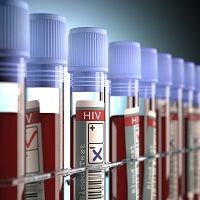Article
HIV Testing Rates and the Effectiveness of Awareness Campaigns
Author(s):
Researchers reported that providing mass HIV testing can be an effective way to get more people tested, and noted that geographic and socio-economic factors have an impact on such programs.

Researchers examined the data from parts of the National Income Dynamics Study (NIDS) in South Africa and found that providing mass HIV testing can be an effective way to get more people tested, and noted that geographic and socio-economic factors have an impact on such programs. The study, authored by Brendan Maughan-Brown of the Southern African Labor and Development Research Unit at the University of Cape Town and colleagues, the study was published in the Journal of the International AIDS Society on April 11, 2016.
The authors say they undertook the study with two questions in mind, “First, how many individuals tested for the first time during the South African campaign? Second, was the program effective in overcoming persistent geographic, demographic and socio-economic disparities in HIV testing uptake, particularly among groups at highest risk of contracting HIV?” In order to answer those questions, they used information collected from individuals aged 15 and older who participated in NIDS.
The primary outcome measure was based on the question “I do not want to know the result, but have you ever had an HIV test?” Subjects could answer yes, no, don’t know, or refuse to answer. The considered demographic data, as well as geographic and socio-economic data. Additionally, they took health status into account.
The researchers report finding “approximately 7.6 million South Africans self-reported testing for the first time during the intervention,” and that their estimates “suggest that approximately one in three tests conducted during the campaign were for someone who had not previously tested for HIV.” They also found that the campaign may have motivated higher-risk populations to test, as well. Poorer people, and more socially isolated people seem to have taken the test as a result of the campaign.
There were, however, shortfalls, including say the researchers, the fact that “by 2012 35% of the black African population aged 15 and older hand never been tested for HIV,” and that there is some gender disparity with more women testing than men. There were some limitations to the study as well, such as the fact that some data was collected during the testing period, which may have led to underestimating the number of actual test takers.
Notwithstanding the limitations, the researchers conclude, “The proportion of South Africans who had ever tested for HIV increased dramatically during an extensive and unprecedented national campaign conducted between 2010 and 2011. The campaign also appeared to have improved the targeting of HCT services and equity in uptake of testing.”





